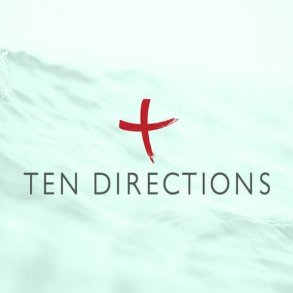By Alanna Irving originally published in Medium

My experience has taught me that firing myself is an essential aspect of purposeful, self-determined work.
Death and change are essential to growth and evolution. The bird has to leave the nest. New trees spring up in the forest where old trees decay. A species only acquires adaptive traits with new generations. The old must make space for the new; anything else is stagnation.
This is especially true of purposeful work. Because you’re there for more than just a job, achieving the larger mission in the future can require the end of something in the present.
I never even considered the concept of “firing myself” before working in self-governed organisations. There was getting fired (something done to you, always in the passive voice), firing (done to a person by a company), and quitting (done to a company by a person). Firing yourself is something you do for yourself, and for the company, together.
That’s not to say it’s easy. Death is scary, and change is hard. Our egos always drive us to rationalise our own indispensability. We form deep attachments to our roles and the people on our teams.
How do you know when it’s time? Self awareness is “level zero” of self-determination, the soil from which distributed leadership grows. Combined with trusting relationships and good communication, it just becomes clear.
Firing myself has come up so many times that I now see it as part of the natural cycle of self-determined work. Since everything comes to an end, it’s inevitable to someday make this decision.
I’ve just done it, again.
. . .
With collective ownership, and without bosses, we hadn’t figured out how to decentralise admin, finances, policy, and strategy as a network. As it grew, that work began to fall on just a few shoulders. Some people were bottlenecks, while others were left out. Hierarchy and burnout loomed.
A true collective requires commitment and engagement from everyone, but it’s totally impractical for large numbers of busy professionals to all get involved in traditional management processes. We needed something different.
So we fired ourselves, and something incredible happened. By stepping back, we created space for innovation and engagement.
Since we weren’t doing things the old way, a large number of people were motivated to figure out new ways. We built new participatory tools, like Loomio for decision-making and Cobudget for financial planning. Changes in the network began that later led to the Enspiral Refactor and open-source documentation. The individuals on the Support Crew were freed to work on new passions, and both they as individuals and the network as a whole evolved.
I’ve repeated this pattern over and over again since. Every time I create a clearing in the forest, new green shoots spring up.
By late 2016, the end of the runway from our 2015 round of ethical capital raising was approaching, and revenue wasn’t growing as fast as we’d hoped. I’d spent the year working mostly on marketing and documentation, to help more people succeed using our existing product. While we had some success (our rich media and training offerings were well-received, and visits to the homepage were way up), and we tried our damned hardest, it wasn’t enough.
Loomio and the people who work on it are driven first and foremost by purpose — making it easy for anyone, anywhere, to participate in decisions that affect their lives. We got together as cooperative members to decide what to do. Carefully considering the budget and our strategic priorities, we discussed how to achieve the best outcome for the mission, and for our users and investors.
A clear consensus emerged: make a focused push to improve the product based on what we’ve learned from users, and find more funding. With our limited runway, we had to narrow down the scope of work, and reduce headcount.
This meeting wasn’t particularly stressful. It was just the latest in a series of evolutions of the Loomio team. Over the years we had been a swarm of volunteers, a large co-op of part-timers, and a carefully coordinated agile machine. We’d gotten pretty good at restructuring, and we held each other in trusting, caring relationships.
I applied my strategic brain to the problem, and suggested a smaller team of workers who I thought could best serve the co-op in its current phase. My name wasn’t included. We all contributed our viewpoints and arrived at some decisions. This time, it was my turn to go.
It wasn’t a conflict or a betrayal. There was no “me versus them”. We decided together, and I decided for myself.
Firing yourself, for the sake of something you believe in, surrounded by people who care deeply for you and share your purpose, is beautiful. It feels right.

Recently, I spent several months speaking at conferences and facilitating events internationally, around the theme of self-organising collectives. Despite the diversity of people I talked to, I kept hearing the same story: founders stuck in the center of what they’d built.
They could not step away for fear that the entire structure would implode. They wanted to be a peer, not a boss, but they didn’t know how to distribute leadership effectively, or how to reduce dependence on themselves.
This is the opposite of resilience, and I’m afraid it’s all too common. Founders need to be free to go found the next thing. The world needs them, and the organisations they leave, to continue to evolve.
If you contribute to a team so strong that it no longer needs you, then you have succeeded. If your brainchild has the capacity to use the space you leave to grow in ways you couldn’t even envision, then you have succeeded. If you trust your co-collaborators so much that you gladly hand over to them what you care about the most, then you have succeeded.
The compost of my previous roles is still helping all the projects I’ve worked on grow. When the time was right, I was listened to and my contributions were valued. Now, I’m moving forward with the support and loving friendship of my former team members, and the confidence that comes from making my own choices.
Maybe instead of firing, I’ll call it letting go.
. . .
Permission to republish is granted by the author.
Featured Image/Graphic link added by Enlivening Edge Magazine.




